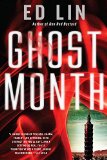Summary | Excerpt | Reading Guide | Reviews | Read-Alikes | Genres & Themes | Author Bio

Tan's newest novel mixes pure fiction with elements of autobiography. In the acknowledgements she writes, "The heart of this story belongs to my grandmother, its voice to my mother".
The first time Amy Tan - The New York Times best-selling author of The Joy Luck Club, The Kitchen God's Wife, and The Hundred Secret Senses - learned her mother's real name as well as that of her grandmother was on the day she died. It happened as Tan and several siblings - unified by a need to feel helpful instead of helpless - gathered to discuss their dying mother's past and prepare her obituary. Tan was stunned when she realized she had not known her own mother's birth name. It was just one of several surprises. In the act of writing a simple obituary Tan came to realize there was still so much she did not know about her. Soon afterwards she began rewriting the novel she had been working on for five years. Inspired by her own experiences with family secrets kept by one generation from the next, and drawn from a lifetime of questions and images, the result is The Bonesetters's Daughter.
The story begins when Ruth Young, a ghostwriter of self-help books, comes across a clipped stack of papers in the bottom of a desk drawer. Young has been caring for her ailing mother, LuLing, who is beginning to show the unmistakable signs of Alzheimer's disease. Written in Chinese by LuLing years earlier, when she first started worrying something was wrong with her memory, the papers contain a narrative of LuLing's life as a girl in China, and the life of her own mother, the daughter of the Famous Bonesetter from the village of Xian Xin - Immortal Heart - near the Mouth of the Mountain. Within the calligraphed pages Ruth finds the truth about a mother's heart, what she cannot tell her daughter yet hopes her daughter will never forget.
With her latest novel Amy Tan explores the changing place one has in a family of names that were nearly forgotten. Just as she herself has done, Tan shows Ruth finding the secrets and fragments of her mother's past - its heartfelt desires, its deepest wounds, its most profound hopes - and with each new discovery reconfiguring her assessment of the woman who shaped her life, who is in her bones.
The extent to which Tan's newest novel mixes pure fiction with elements of autobiography is made clear by Tan herself. In acknowledgements of The Bonesetter's Daughter she writes, "The heart of this story belongs to my grandmother, its voice to my mother."

If you liked The Bonesetter's Daughter, try these:

Love and Other Consolation Prizes
by Jamie Ford
Published 2018
From the bestselling author of Hotel on the Corner of Bitter and Sweet comes a powerful novel, inspired by a true story, about a boy whose life is transformed at Seattle's epic 1909 World's Fair.

by Ed Lin
Published 2015
Jing-nan is shocked to the core when he learns his ex-girlfriend from high school has been murdered. But the facts don't add up...
The fact of knowing how to read is nothing, the whole point is knowing what to read.
Click Here to find out who said this, as well as discovering other famous literary quotes!